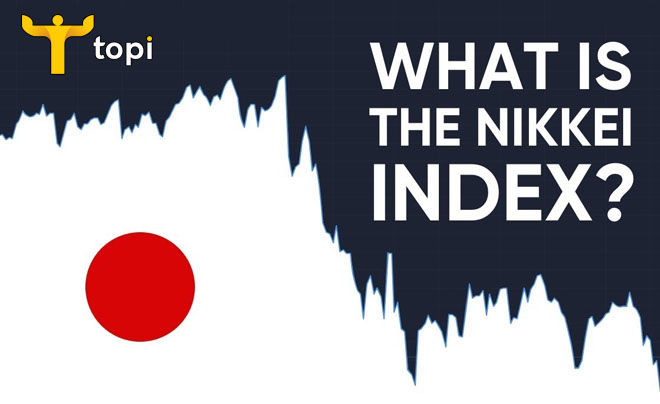Người Oromo
Oromiyaa | |
|---|---|
| Khu vực có số dân đáng kể | |
| 36,6 triệu @2020[1] | |
| 470.700 @2019[2] | |
| 87.000[3] | |
| 10.000[4] | |
| 2.030 @2014[5] | |
| 3.350 @2016[6] | |
| Ngôn ngữ | |
| Tiếng Oromo | |
| Tôn giáo | |
| Hồi giáo: 55% – 60%, Ki tô giáo: 40% – 45%, Waaqeffanna truyền thống: 15% [7] | |
| Sắc tộc có liên quan | |
| Người Afar · Agaw · Amhara · Beja · Gurage · Saho · Somali · Tigraya · Tigre · Sidama · và dân tộc Cushit khác[8] | |
Người Oromo (phát âm /ˈɒrəmoʊ/[9] hay /ɔːˈroʊmoʊ/;[10][11] tiếng Oromo: Oromoo) là một dân tộc Cushit cư trú chủ yếu ở Ethiopia và vùng sừng châu Phi. Tại Ethiopia người Oromo là nhóm dân tộc lớn nhất, chiếm 34,5% dân số.[12]

Người Oromo nói tiếng Oromo, (còn được gọi là Afaan Oromoo và Oromiffa), một ngôn ngữ thuộc Ngữ tộc Cushit trong ngữ hệ Phi-Á. Tên gọi Oromo xuất hiện trong văn học châu Âu lần đầu tiên vào năm 1893 và dần trở nên phổ biến vào nửa sau của thế kỷ 20.[13][14]
Ngày nay khoảng 55% – 60% người Oromo theo Hồi giáo, 40% – 45% theo Ki tô giáo. Một số người Oromo vẫn theo tôn giáo truyền thống của họ, gọi là Waaqeffanna [15], và họ sử dụng hệ thống gọi là gadaa để cai trị [16][17]. Một nhà lãnh đạo do hệ thống gadaa bầu ra nắm quyền trong 8 năm, với một cuộc bầu cử diễn ra vào cuối 8 năm đó [18][19][20].
Vào thế kỷ 18 - 19 người Oromo có ảnh hưởng thống trị ở miền bắc Ethiopia, trong thời kỳ gọi là Zemene Mesafint [21][22][23].
Tham khảo
[sửa | sửa mã nguồn]- ^ Oromo first-language speakers at Ethnologue (23rd ed., 2020)
- ^ “Population and Housing Census: Ethnic Affiliation”. knbs.or.ke. Kenya National Bureau of Statistics. Bản gốc lưu trữ ngày 12 tháng 5 năm 2013. Truy cập ngày 22 tháng 10 năm 2020.
210,000 Borana, 110,500 Gabra,85,000 Orma, 45,200 Sakuyye and 20,000 Waata
- ^ Project, Joshua. “Oromo, Southern in Somalia” (bằng tiếng Anh). Truy cập ngày 22 tháng 10 năm 2020.
- ^ “A growing Oromo community struggles for visibility in Minnesota”. minnpost.com.
- ^ Australian Bureau of Statistics 2014, The People of Australia Statistics from the 2011 Census, Cat. no. 2901.0, ABS, ngày 30 tháng 11 năm 2016, Lưu trữ 2017-04-17 tại Wayback Machine
- ^ “Archived copy”. Bản gốc lưu trữ ngày 23 tháng 9 năm 2017. Truy cập ngày 22 tháng 10 năm 2020.Quản lý CS1: bản lưu trữ là tiêu đề (liên kết)
- ^ Ethiopia and the Oromo People. Refworld, 1998.
- ^ Joireman, Sandra F. (1997). Institutional Change in the Horn of Africa: The Allocation of Property Rights and Implications for Development. Universal-Publishers. tr. 1. ISBN 1581120001.
- ^ Laurie Bauer, 2007, The Linguistics Student’s Handbook, Edinburgh
- ^ Dictionary Reference: Oromo
- ^ The Free Dictionary: Oromo
- ^ Ethiopia: People & Society Lưu trữ [Date missing] tại Wikiwix, CIA Factbook (2016)
- ^ Tesema Ta'a (2006). The Political Economy of an African Society in Transformation: the Case of Macca Oromo (Ethiopia). Otto Harrassowitz Verlag. tr. 17–19 with footnotes. ISBN 978-3-447-05419-5.
- ^ Mohammed Hassen (2015). The Oromo and the Christian Kingdom of Ethiopia: 1300–1700. Boydell & Brewer (Originally: Cambridge University Press). tr. 2–3. ISBN 978-1-84701-117-6.
- ^ Donald N. Levine (2014). Greater Ethiopia: The Evolution of a Multiethnic Society. University of Chicago Press. tr. 35–41. ISBN 978-0-226-22967-6.
- ^ “Gada system, an indigenous democratic socio-political system of the Oromo – intangible heritage – Culture Sector – UNESCO”. ich.unesco.org (bằng tiếng Anh). Truy cập ngày 22 tháng 10 năm 2020.
- ^ Harold G. Marcus A History of Ethiopia. University of California Press (1994) pp. 55 Google Books
- ^ John Ralph Willis (2005). Slaves and Slavery in Africa: Volume Two: The Servile Estate. Routledge. tr. 122–127, 129–134, 137. ISBN 978-1-135-78017-3.
- ^ John Ralph Willis (2005). Slaves and Slavery in Africa: Volume Two: The Servile Estate. Routledge. tr. 128–134. ISBN 978-1-135-78016-6.
- ^ Ira M. Lapidus (2014). A History of Islamic Societies. Cambridge University Press. tr. 483. ISBN 978-1-139-99150-6.
- ^ Richard Pankhurst (1997). The Ethiopian Borderlands: Essays in Regional History from Ancient Times to the End of the 18th Century. The Red Sea Press. tr. 279–280. ISBN 978-0-932415-19-6.
- ^ Mohammed Hassen, Conquest, Tyranny, and Ethnocide against the Oromo: A Historical Assessment of Human Rights Conditions in Ethiopia, ca. 1880s–2002, Northeast African Studies Volume 9, Number 3, 2002 (New Series)
- ^ Arne Perras (2004). Carl Peters and German Imperialism 1856–1918: A Political Biography. Oxford University Press. tr. 154–157. ISBN 978-0-19-926510-7.
Liên kết ngoài
[sửa | sửa mã nguồn] GIẢM
26%
GIẢM
26%
![[Review sách] Cân bằng cảm xúc cả lúc bão giông](https://down-spe-vn.img.susercontent.com/3d596d5e3b0931abe3992652454f58a7.webp) GIẢM
25%
GIẢM
25%
 GIẢM
11%
GIẢM
11%
 GIẢM
27%
GIẢM
27%
 GIẢM
20%
GIẢM
20%
 GIẢM
24%
GIẢM
24%



